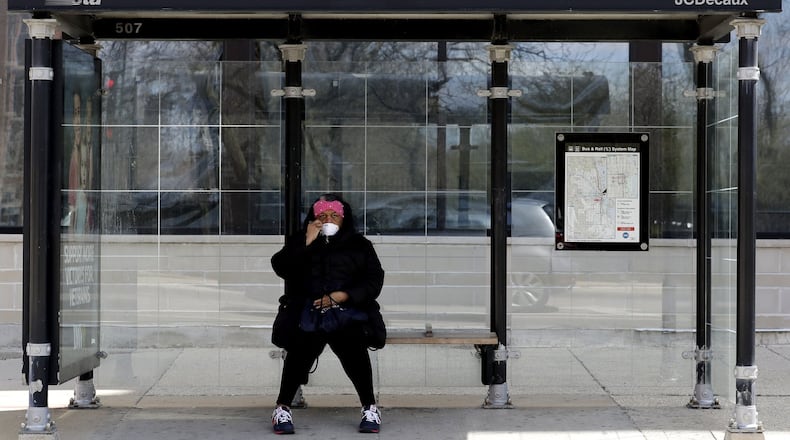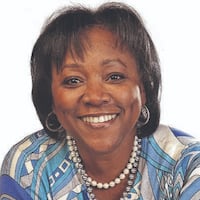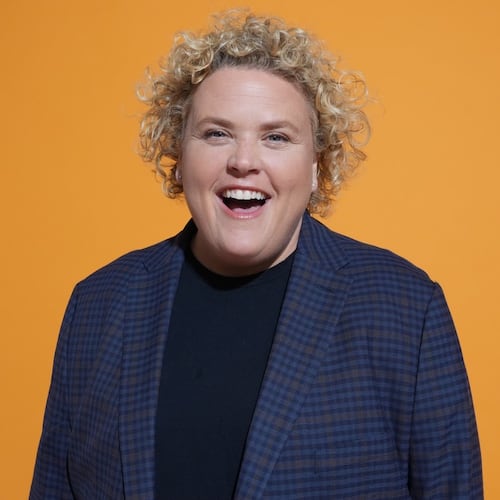African Americans are dying from COVID-19 at disproportionate rates. At the same time, we are less likely to even be tested. We are less likely to be treated for the virus. And we are more likely to be low-wage essential workers on the front lines, putting us at greater risk for contracting the virus.
If that doesn’t make you want to weep, you might want to check your pulse.
Me? I don’t know whether to laugh or cry.
Structural inequalities that make this even possible have long existed. But this may be the first time, thanks to the coronavirus, America is forced to deal with the staggering health care and economic disparities that afflict communities of color.
It’s commonly known, for instance, that African Americans suffer disproportionately from cardiovascular-related diseases such as high blood pressure, heart disease, and diabetes, all the things that make us more susceptible to succumbing to COVID-19.
But it’s also the case that African Americans, particularly those of lower economic status, have a much more tenuous connection to health systems and to health care professionals, said Alford Young, a professor of sociology at the University of Michigan. Thus, he said, they are more inclined to rely upon themselves when assessing their health rather than seek the care of a health care professional.
RELATED | Everything you need to know about coronavirus
“Not only do many live in densely populated areas where it’s hard to social distance, but they also live in households that are more crowded than the homes occupied by more privileged Americans,” Young said. “Those more crowded homes are also smaller in size. Hence, low-income African Americans and others without financial resources struggle mightily with the challenge of trying to isolate and maintain social distance.”
Last week, President Donald Trump publicly acknowledged for the first time the racial disparity during a White House task force briefing.
“We are doing everything in our power to address this challenge, and it’s a tremendous challenge,” Trump said. “It’s terrible.”
RELATED | Outbreak apparently taking heavier toll on blacks
With few exceptions, numbers documenting the disproportionate spread are hard to come by, but here’s what we know right now from news reports:
In Louisiana, African Americans are 32% of the population but account for 70% of deaths from the coronavirus. In Michigan, they make up 14% of the population but 40% of COVID-19 deaths. And in Illinois, they are 15% of the population but 42% of deaths.
Credit: Screenshot via DeKalb County
Credit: Screenshot via DeKalb County
Dr. S. Elizabeth Ford, district health director of DeKalb County and interim district health director of Fulton County, said a review of statewide data from the Georgia Department of Health shows that as of April 6, African Americans, in some cases, outnumber those contracting COVID-19 and dying by more than a 2-to-1 ratio.
“It’s pretty shocking,” she said.
RELATED | Why Grady doctor makes plea for us to stay home so she can go to work
Of the 1,200 COVID-19 cases reported in Fulton County, more than 900 don’t have racial data. Of the 299 that did identify by race, Ford said, 67%, or 201, identified as black; 27%, or 82, identified as white; and 5%, or 16, identified as Hispanic.
In DeKalb County, the numbers were even more striking. Of the county’s 709 known COVID cases, only 125 identified by race, but of those, 24, or 19%, were white; 92, or 74%, were African American; and 9, or less than 1%, were other.
Among the dead in DeKalb, only 5 out of 11 identified by race — 20% were white, 80% were African American. Those numbers were not available for Fulton County.
Statewide, there have been more than 4,500 COVID-19 cases reported as of April 6, but only 2,040 people identified by race. Of those, 52% were African American, 42% identified as white and 6% identified as other. According to the most recent census, blacks make up 32% of Georgia’s population and whites 60%.
While the numbers are indeed troubling, Ford said COVID-19 is just one more blight in an already distressed community.
“I knew it would be uneven, but I didn’t think it would be this dramatic,” Ford said. “I’ve been a health director for 15 years, and I don’t think anything has scared me more than this. Because this is a novel virus, we’re learning something new every day, so how we address it changes nearly every day.”
RELATED | From slavery to mass incarceration?
What’s clear is that in addition to having weakened immune systems due to chronic diseases, a lot of underlying issues such as access to health care and health coverage put African Americans at higher risk of contracting and dying from COVID-19.
“Right now, the easiest way to get a test is from a referral from primary care physicians,” Ford said. “If you have no insurance, then you probably don’t have a primary care physician, which impacts your ability to be referred for testing. Studies have also shown there are differences in how blacks are treated by health care professionals. I know that’s controversial to some, but it’s true.”
Dr. Sharrelle Barber, a public health professor at Drexel University who has spent the past 10 years researching racial and ethnic inequities in health, said the numbers of infected and dead African Americans from COVID-19 are probably even worse than we think.
“We know at least anecdotally that people have been turned away from hospitals when presenting with symptoms,” she said. “So, the numbers are tricky because we are not doing widespread testing and not everyone is tracking the data by race. If you aren’t tracking the cases, you don’t know.”
Those essential workers that we keep hearing so much about aren’t just doctors and nurses. They are blacks and Hispanics who disproportionately hold low-wage service jobs — sanitation workers, store clerks and bus drivers — and who are even less likely than doctors to have the proper personal protective equipment. But like doctors, they are returning home, only to put their family, friends and community at risk.
RELATED | Racism: It isn’t your fault but it is your problem
As a social epidemiologist, Barber is used to counting deaths, but she got into this field because she wanted to make a difference and use data to make the invisible, visible in order to prevent unnecessary deaths.
“I’m here to bear witness so we don’t fall into a ‘blame the victim’ narrative,” she said. “These are people, families, communities. As much as you know the disparities are to be expected, it’s still very sobering and disheartening. It’s a stark reminder that racism does kill and is deadly and we need to address these underlying structural issues in tandem to what else we do in this moment.”
Will this be the wake-up call to finally push for a more equitable and just society?
Barber hopes so, but if we don’t move now, it will say a lot about our values.
“This can’t be the norm, and we can’t go back to normal,” she said. “We must do a radical restructuring of our nation and our world.”
Find Gracie on Facebook (www.facebook.com/graciestaplesajc/) and Twitter (@GStaples_AJC) or email her at gstaples@ajc.com.
About the Author
The Latest
Featured





